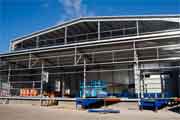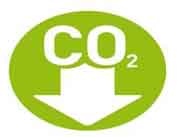| |
|
| |
|
 |
Supply
Chain by the Numbers |
| |
|
| |
- Oct.13, 2016 -
|
| |
|
| |
|
| |
|
| |
More eCommerce Moves by Amazon, Walmart; Foxconn Embraces Robots Big Time in China; US CO2 Emissions Headed for 24-Year Low; Demand for US Warehouse Space Continues to be Hot |
| |
|
| |
| |
| |
|
100%
|
 |
That is the percent of the top 50 US markets - all of them, that is - that are experiencing either "peaking" or "rising" conditions for industrial real estate space, mostly warehouses. That according to the latest market analysis report from JLL (formerly Jones Lang Lasalle), and that is quite remarkable, actually. JLL expects demand for warehouse space to remain strong in the US through 2018, fueled in large measure by companies seeking facilities for efulfillment. Through the end of the third quarter, the national vacancy rate for industrial stood near all-time lows, at just 5.8%, despite much additional supply being delivered to the market, JLL said. "Net absorption," which measures the amount of space occupied at the beginning and end of a reporting period, has been in solidly positive territory for the past few years, signaling that strong demand continues to take on newly available square footage. The warehouse space party is sure to end sometime, but it keeps rocking on for now, pushing leasing rates higher. |
| |
| |
|
| |
| |
5.18 Billion |
 |
That's how many metric tons of CO2 emissions the US is on pace to produce in 2016 – which would be the lowest level since 1992 – even as there has been significant economic growth over that period. That means the US' CO2 "intensity" has been falling rather steadily. That according to a new report by the US Energy Information Administration last week. The EIA cites several factors in recent downturns in US CO2 emissions, including power plants switching from coal to natural gas sources. Natural gas produces roughly half the CO2 created by coal-based electricity production. The progress is gradual - the EIA says that the US' carbon intensity didn’t really start to drop until 2005 - but has a major impact over time. Total CO2 emissions should be down 1.5% in 2016, after a 3% decline last year. Alternative energy sources such as solar and wind are also playing an increasingly important role in reducing CO2, the EIA notes. Utility Duke Energy, for example, says that its changing generation mix has lowered its overall carbon dioxide emissions by 28% since 2005. |
| |
| |
|
|
|
| |
 |
 |
| |
|
|
| |